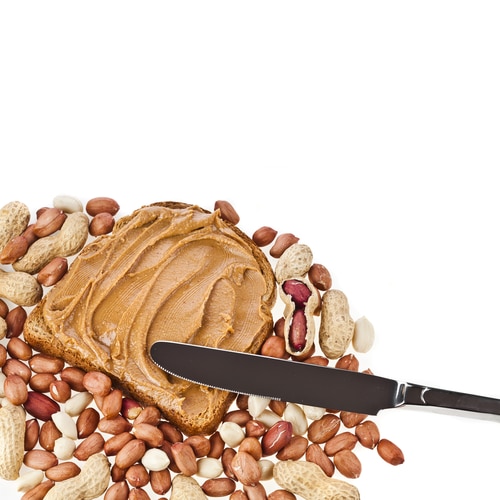
Almond Butter
Just as almonds are one of the healthiest nuts, almond butter has health benefits you won’t get from peanut butter. Almonds are an excellent source of vitamin E, a fat-soluble antioxidant vitamin that’s important for health. In fact, two tablespoons of almond butter supplies 40% of the vitamin E you need each day. Almonds are also a good source of heart-healthy monounsaturated fats that lower LDL-cholesterol and reduce the risk of heart disease. That’s one reason nuts are such a heart-healthy snack.
Even though almonds are relatively high in calories, according to a recent study, about 20% of the calories in nuts aren’t absorbed. You’ve got to love those calorie freebies! Almond butter also has slightly more calcium, magnesium, and iron than peanut butter – and 25% less saturated fat.
Other Nut Butters
Almond butter isn’t the only alternative to peanut butter. Other options include hazelnut butter, macadamia nut, pistachio butter, walnut butter and pecan butter available at natural food markets. You probably already know that nuts are a good source of heart-healthy, monounsaturated fats and fiber, but did you know they also contain natural plant sterols that lower LDL-cholesterol.? Plus, they contain an amino acid called l-arginine that helps the walls of blood vessels relax so blood can flow more freely. No wonder nuts top the list of foods that are good for your heart.
Ideas for Using Nut Butters
Nut butters aren’t just for spreading on crackers and bread. Here are other ways to use them:
Stir nut butter into a bowl of hot oatmeal and milk for added flavor and creaminess.
Spread your favorite nut butter on to sliced fruits and vegetables like apple slices, pears, carrot stick, and celery. The “good fats” in the nut butter will boost absorption of the fat-soluble nutrients in the fruits and vegetables.
Stir a spoonful into yogurt for a creamy, nutty treat with healthy fats and probiotics from the yogurt.
Add a spoonful of almond butter to a smoothie for a Vitamin E boost.
Use nut butter in place of cornstarch to thicken sauces.
Mix nut butter with Greek yogurt, and use it as a healthy dip for sliced fruit.
Make Your Own
If you have a food processor, it’s not hard to make your own nut butters using whole nuts. Simply add nuts to the food processor along with a small amount of olive oil. Process the nuts until they reach your desired consistency. If desired, add a dash of salt for extra flavor. Some pre-packaged nut butters have added sugar, and you can eliminate the sugar by making your own. If you want nut butter that tastes a little sweeter, add a small amount of a natural sweetener like Stevia to the food processor. Always refrigerate nut butter you make yourself since it contains no preservatives.
The Bottom Line?
Nut butters are heart-healthy and filling, but they’re not low in calories. Don’t snack on whole nuts on the same day you eat nut butter or the calories will really add up. Enjoy exploring the world of creamy nut butters!
References:
Self Nutrition Data.
American Journal of Clinical Nutrition. 2012 ajcn.035782.
Mayo Clinic “Nuts and Your Heart”
Related Articles By Cathe:
Healthy Food Changes: Makes These Switches for Greater Nutritional Benefits

